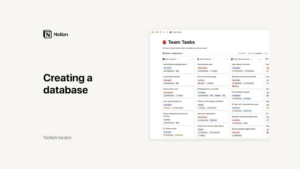Lesson 3: Google My Business
MANAGING REVIEWS AND RATINGS ON GOOGLE MY BUSINESS
In today’s digital age, online reviews and ratings have become a critical aspect of a business’s success. For many customers, reviews are the deciding factor when choosing between businesses. Google My Business (GMB) is one of the most influential platforms where customers can leave reviews that directly impact your business’s online reputation and local search rankings. In this guide, we will explore the best practices for managing reviews and ratings on GMB, from encouraging positive reviews to responding to feedback and leveraging customer opinions to enhance your business.
The Importance of Reviews and Ratings
Building Trust and Credibility
Reviews serve as social proof, providing potential customers with insights into the quality and reliability of your business based on the experiences of others. A high rating, coupled with numerous positive reviews, can significantly boost your business’s credibility. When potential customers see that others have had positive experiences, they are more likely to trust your business and choose your services or products over those of your competitors.
For instance, imagine a customer searching for a local coffee shop. They are likely to choose a café with numerous positive reviews and a high rating over one with few or no reviews. This demonstrates the direct impact reviews have on customer decision-making.
Improving Local SEO
Beyond building trust, reviews and ratings play a crucial role in local SEO. Google considers reviews as a ranking factor for local search results. This means that businesses with higher ratings and more positive reviews are likely to appear higher in search results, thus increasing visibility and attracting more customers. A well-managed GMB profile with positive reviews can lead to more clicks, more foot traffic, and ultimately, more sales.
For example, if two businesses offer similar services but one has a higher average rating and more positive reviews, Google is more likely to rank that business higher in search results. This increased visibility can be the difference between a potential customer clicking on your business or a competitor’s.
Encouraging Positive Reviews
Provide Excellent Customer Service
The foundation of positive reviews is exceptional customer service. Ensure that your staff is well-trained, friendly, and responsive to customer needs. A great customer experience naturally leads to positive feedback. When customers feel valued and satisfied with their experience, they are more inclined to share their positive impressions online.
For example, a restaurant that consistently delivers excellent service, from the quality of the food to the friendliness of the staff, is more likely to receive glowing reviews. These positive reviews not only enhance the restaurant’s reputation but also attract more customers.
Ask for Reviews
Encouraging satisfied customers to leave reviews is a straightforward yet highly effective strategy. You can ask for reviews in person after a successful transaction, through email follow-ups, or via social media. Make the process as easy as possible by providing direct links to your GMB profile where they can leave their feedback.
For example, after a customer has enjoyed a meal at your restaurant, you could send a follow-up email thanking them for their visit and inviting them to leave a review. Providing a direct link to your GMB profile in the email simplifies the process, increasing the likelihood that they will follow through.
Incentivize Reviews (Carefully)
While it’s essential to avoid any practices that might be seen as buying reviews, offering small incentives for honest feedback can be a valuable tactic. For example, you might offer a discount on their next purchase in exchange for leaving a review. However, it’s important to ensure that the incentive is for honest feedback, not just positive reviews, to maintain transparency and trust.
For instance, a retail store might offer a 10% discount on a customer’s next purchase if they leave a review. This approach encourages feedback while still respecting the integrity of the review process.
Follow Up with Customers
Sending follow-up emails to thank customers for their purchase and gently reminding them to leave a review can be very effective. Personalized messages that reference specific details about their experience can be more impactful than generic requests. This approach not only encourages reviews but also shows customers that you value their opinion and appreciate their business.
For example, after providing a service, a freelancer might send a personalized email thanking the client for their collaboration and inviting them to share their experience by leaving a review. Mentioning specific details from the project can make the request feel more personal and sincere.
Responding to Reviews
Thanking Positive Reviews
When a customer takes the time to leave a positive review, it’s important to acknowledge their effort. Respond to positive reviews by thanking the customer for their feedback. Personalizing your response to reflect specific comments they made shows genuine appreciation and encourages future engagement. This not only strengthens your relationship with the reviewer but also demonstrates to other potential customers that you value feedback.
For example, if a customer leaves a review praising the customer service they received at your store, you could respond with, “Thank you so much for your kind words! We’re thrilled to hear that our team provided you with excellent service. We look forward to serving you again soon.”
Addressing Negative Reviews
Negative reviews are inevitable, but how you respond to them can make a significant difference. Handle negative reviews professionally and promptly. Acknowledge the customer’s issue, apologize if necessary, and offer a solution or invite them to discuss the matter privately. This shows other potential customers that you care about resolving problems and are committed to customer satisfaction.
For instance, if a customer leaves a negative review about a delayed delivery, you might respond with, “We’re sorry to hear about the delay you experienced. This is not the standard of service we strive for. Please contact us directly at [email/phone] so we can resolve this issue for you.”
Consistent Responses
Developing a consistent approach to responding to reviews, whether positive or negative, is essential. Timely and thoughtful responses demonstrate your commitment to customer satisfaction. Establish guidelines for your responses to ensure consistency in tone and messaging, which helps maintain a professional image across all customer interactions.
For example, you might decide to respond to all reviews within 48 hours, using a template that you customize for each specific situation. This approach ensures that no review goes unnoticed and that all customers feel valued.
Leveraging Reviews for Improvement
Analyzing Feedback
Regularly reviewing and analyzing feedback is crucial for identifying common themes or issues that customers raise. Use this information to make necessary improvements in your products, services, or overall customer experience. This proactive approach not only helps you address problems but also demonstrates to customers that you value their input and are committed to continuous improvement.
For example, if multiple reviews mention slow service at your restaurant, it might be time to review and streamline your service processes to enhance customer satisfaction.
Highlighting Positive Feedback
Positive reviews are a valuable marketing asset. Share these reviews on your website, social media, and marketing materials to highlight customer testimonials. Showcasing positive feedback can enhance your business’s reputation and attract new customers who are influenced by the experiences of others.
For instance, a hotel might feature glowing reviews on its website, using them as testimonials to reassure potential guests of the quality of their service and accommodations.
Creating Case Studies
For particularly detailed positive reviews, consider turning them into case studies. Showcasing real-life success stories can provide potential customers with compelling reasons to choose your business. Case studies offer a deeper dive into how your products or services solve problems, adding another layer of credibility to your offerings.
For example, a software company might create a case study based on a client’s review that details how their product improved the client’s business operations, offering insights and results that resonate with potential customers.
Handling Fake or Inappropriate Reviews
Identifying Fake Reviews
Unfortunately, fake reviews can sometimes be left by competitors or individuals with malicious intent. Be vigilant in spotting these reviews, which may include overly generic comments, extremely negative language, or a lack of specific details. Identifying and addressing fake reviews is crucial to maintaining the integrity of your online reputation.
For example, if a review seems suspiciously generic or doesn’t align with any real customer interactions, it may be worth investigating further.
Reporting Reviews to Google
If you identify a fake or inappropriate review, it’s important to report it to Google. Use the “Flag as inappropriate” option next to the review and provide a reason for your report. Google will review the case and take appropriate action if the review violates their policies. While the process can take time, addressing fake reviews is essential for maintaining a trustworthy online presence.
For instance, if you receive a review that contains offensive language or seems to be from a fake account, flagging it for review is the best course of action.
Maintaining Professionalism
Even when dealing with fake or malicious reviews, it’s important to maintain professionalism in your responses. Avoid getting into public disputes, as this can harm your reputation. Instead, address the review calmly and factually, and take appropriate steps to have it removed if it violates guidelines.
For example, if you receive a fake review, respond with, “We take all feedback seriously. However, we cannot find any record of your experience with our business. Please contact us directly so we can resolve any issues.”
Managing reviews and ratings on Google My Business is essential for maintaining a positive online reputation and improving your local SEO. By encouraging positive reviews, responding thoughtfully to all feedback, and leveraging reviews for business improvement, you can build a strong, trustworthy presence on Google. In the next lesson, we will explore how to leverage Google My Business features to maximize your business’s visibility and customer engagement. Through diligent management of your reviews and ratings, you can ensure that your business not only survives but thrives in the competitive online marketplace.
Credits: this video is available on the YouTube channel WsCube Tech









